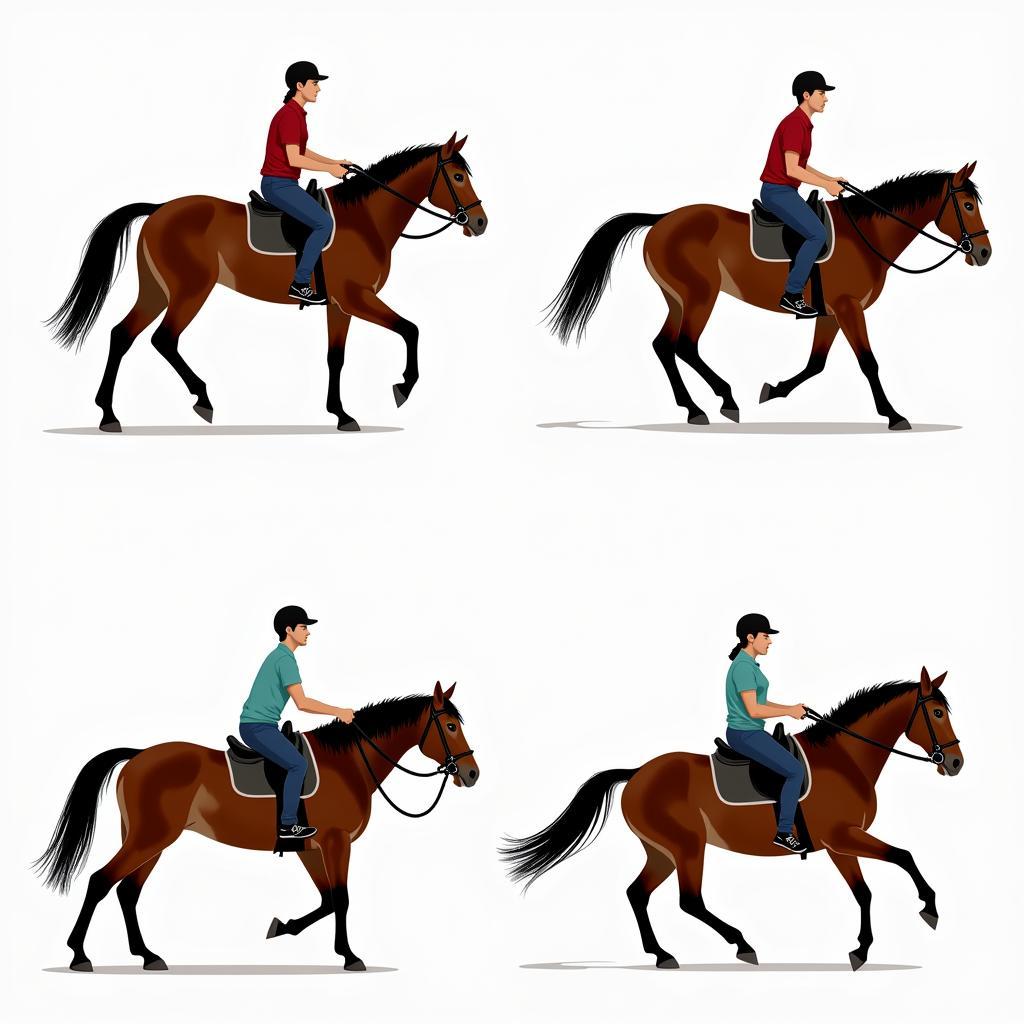A Horse Lunging Line is a crucial tool for training and exercising horses. It allows you to work your horse from the ground, building muscle, improving balance, and teaching new skills. This comprehensive guide will cover everything you need to know about using a lunging line effectively and safely.
Choosing the Right Lunging Line for Your Horse
Choosing the right lunging line is the first step towards successful lunging. There are several types available, each with its own advantages and disadvantages. The most common materials are cotton, nylon, and leather. Cotton lines are soft and comfortable for the horse but can be less durable. Nylon lines are strong and weather-resistant, while leather lines offer a premium feel and durability. Consider your horse’s temperament and your training goals when making your selection. For example, a young or sensitive horse might benefit from a softer cotton line, while a more experienced horse could handle a nylon or leather lunging line for horses.
What length should a lunging line be? A standard lunging line is typically around 25-30 feet long. This length provides enough space for your horse to move freely while still allowing you to maintain control. However, longer lines are available for more advanced exercises.
Essential Equipment for Lunging
Besides the horse lunging line itself, there are a few other essential pieces of equipment. A comfortable lunging whip can help you guide your horse and encourage forward movement. A lunging cavesson distributes pressure evenly around the horse’s nose, providing more control than a halter. Protective boots or bandages can help prevent injuries to your horse’s legs.
Safety First: Protecting Your Horse While Lunging
Always prioritize safety when lunging. Check your equipment for wear and tear before each session. Ensure the lunging area is free of obstacles. And remember, proper lunging technique is crucial for preventing injuries to both you and your horse.
Basic Lunging Techniques
Start by teaching your horse to understand voice commands and the pressure of the lunging line. Use clear and consistent cues to ask for different gaits and changes of direction. Keep your body language assertive and maintain a safe distance from your horse.
Understanding Your Horse’s Body Language
Pay close attention to your horse’s body language. A relaxed, forward-moving horse is a happy horse. Signs of stress, such as pinned ears or a swishing tail, may indicate that you need to adjust your technique or end the session. Just like understanding the crest on a horse can indicate its health, understanding their body language while lunging is vital for a positive experience.
“Lunging is a valuable tool, but it’s important to use it correctly,” says renowned equine trainer, Sarah Miller. “Focus on clear communication and positive reinforcement to build a strong partnership with your horse.”
 Horse lunging at different gaits: walk, trot, and canter
Horse lunging at different gaits: walk, trot, and canter
Advanced Lunging Exercises
Once your horse has mastered the basics, you can introduce more advanced exercises, such as transitions between gaits, circles of different sizes, and even lateral movements. These exercises can help improve your horse’s balance, coordination, and responsiveness. Remember, a good war bridle for horses can be beneficial for advanced control.
Building Muscle and Improving Balance with Lunging
Lunging can be an excellent way to build muscle and improve your horse’s balance. By working on circles, you encourage your horse to engage its core muscles and develop strength in its hindquarters. This can be particularly beneficial for young horses or those recovering from injury. Is it possible to overdo it with lunging? Absolutely. “Just like any exercise program, lunging should be introduced gradually and tailored to the individual horse,” advises Dr. Emily Carter, a leading equine veterinarian. “Too much lunging can lead to fatigue and even injury.”
Conclusion
The horse lunging line is a versatile tool for training and exercising your horse. By understanding the different types of lines, essential equipment, and basic lunging techniques, you can help your horse develop strength, balance, and responsiveness. Remember to prioritize safety and pay close attention to your horse’s body language. With patience and consistent practice, lunging can become a valuable part of your horse’s training regimen. Interested in learning more about specific horse breeds like the Kinsky Horse? Explore more resources on our website.
FAQ
- How often should I lunge my horse?
- What are the common mistakes to avoid while lunging?
- How do I introduce lunging to a young horse?
- Can lunging replace ridden exercise?
- What are the benefits of lunging for older horses?
- How can I tell if my horse is enjoying lunging?
- What should I do if my horse misbehaves while lunging?
Need help? Contact us! Phone: 0772127271, Email: [email protected] Or visit us at: QGM2+WX2, Vị Trung, Vị Thuỷ, Hậu Giang, Việt Nam. We have a 24/7 customer service team.